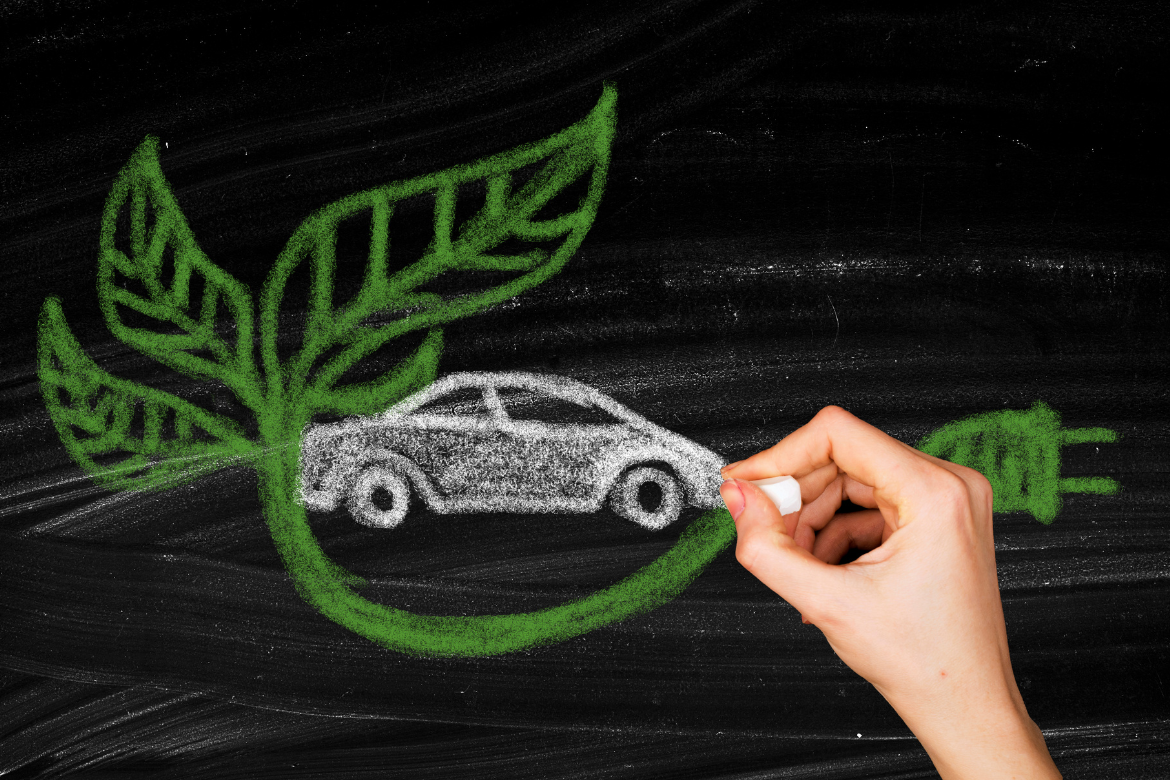Last month, we examined if the EV push could be unraveling. This month, I’ll explore evidence that indicates EVs are picking up momentum globally. In this counterpoint article, let’s forget about the new EPA regulations and mandates for now while taking in adoption rates, what’s driving EV demand, rapid technology advances, and just how easy it is to be green.
The Skinny on EV Adoption
According to EVAdoption, sales of new battery-electric vehicles (BEVs) and plug-in hybrid electric vehicles (PHEVs) in the US should grow to just under 30% of all new car sales in 2030—up from 3.4% in 2021. Factors contributing to this growth include increased consumer interest, advances in EV capabilities, including vehicle range, charging technology speed and availability, improved battery capacity, incentive programs, buy-in from auto manufacturers, the promise of lower price tags, especially on batteries, and, of course, the top reason that individuals consider purchasing EVs—protecting the environment.
Range, for example, has dramatically improved from a median of 68 miles on a single charge in 2011 to 234 miles in 2021. Tesla’s newly launched Model 3 features a range of 272 miles for a rear-wheel drive car and 341 miles for an all-wheel drive.
Government Policies Drive Demand
There are many ways government supports the transition to EVs. For example, the Infrastructure Investment and Jobs Act delivered $7.5 billion toward building a US charging network and increased investment in the nation’s power grid to match demand caused by EV charging. The Inflation Reduction Act (August 2022) extended tax credits up to $7,500 for the purchase of new EVs until 2032 and enabled tax credits to be used for purchasing used EVs. States also offer rebates to buyers, and some states have a zero-emission vehicle (ZEV) program so that auto manufacturers have a quota of EVs.
Technology’s Response
Increased EV adoption is on the shoulders of technology to innovate advances across various battery technologies and charging. Examples include:
- Vehicle-to-grid (V2G) allows drivers to get the most out of charging while optimizing the grid network for a substantially higher number of vehicles or a home network so users can go off the grid.
- New types of EV batteries are being developed, such as sodium-ion batteries, which are more sustainable and cost-effective than lithium, and solid-state batteries, which are lighter and have more range.
- Tesla and others are reducing costs by using “gigacasting” to produce large parts of a car’s body through metal poured into high-pressure molds so that vehicles are lighter and cheaper.
- Tesla has moved to using lithium iron phosphate (LFP) batteries and plans to scale their use in semi-trucks.
- There is an increased focus on incorporating new chemistries in the EV battery, especially the cathode, minimizing the use of expensive lithium carbonate, nickel, and cobalt.
- Global EV charging stations grew from 3 million in 2019 to roughly 15 million in 2023, according to S&P, which expects there to be 70 million chargers by 2030.
- Ford, GM, and Honda announced they will adopt Tesla’s EV charging port, the North American Charging Standard (NACS) connector. In the meantime, Tesla developed an adapter that can be used for non-Tesla vehicles when charging at its locations.
An interesting result of battery technology moving away from certain expensive and difficult-to-mine materials is that the cost of lithium has already fallen by approximately 60%, and the cost of nickel, graphite, and cobalt fell by about 30% each.
It Isn’t Easy Being Green…
The transportation industry accounts for a whopping 24% of CO2 emissions worldwide, and light-duty passenger vehicles account for half of these emissions. According to Bloomberg New Energy Finance, CO2 emissions from this sector will increase until 2030 and decrease as EVs hit the streets en masse, but not fast enough to substantially lower emissions by 2050.
The EV push will be critical to job creation in a green economy. For example, the EU announced a plan to create over 4 million battery manufacturing jobs by 2025 as part of its Green Deal. The American Jobs Plan could generate more than 800,000 EV manufacturing jobs by 2025, while India’s EV plans should create 5.8 million jobs over the next five years.
Indeed, there is momentum, but there is still more work to do. We’re still in a highly inflationary environment: battery range, high prices, and infrastructure challenges will still affect EV adoption. In this economic climate, many large automakers are scaling back interest and investments and postponing some new vehicles.
Meeting Ongoing Challenges
Changes to the federal electric vehicle (EV) tax credit took effect Jan. 1, reflecting a push by the Biden administration to focus the financial incentives on domestically produced vehicles. The tax credit, up to $7,500, will exclude EVs with internationally sourced components from eligibility, and some buyers can use the credit right after purchasing an eligible vehicle. The tax credit will also become redeemable as a rebate among dealers registered with the IRS. Disqualified companies include those wholly or partially controlled by the governments of China, Iran, North Korea, or Russia.
The new restrictions will not apply to raw materials used in EV batteries until 2025, which will be an issue for companies directly investing in mining the needed materials. Many were already involved in the increased domestic mining of copper, lithium, and nickel.
According to a recent Pew Research Center survey, approximately 38% of Americans are very or somewhat likely to consider an EV for their next vehicle purchase. EV manufacturers cut prices in 2023 to promote sales, which will likely continue in 2024.
Last month’s article focused on mandates and how EVs fell short of meeting them. However, look at the driving reasons for moving to EVs, the real pros and cons, and the solid technology advances we’re seeing (that will affect industries beyond automobiles), and there are many reasons to continue to push for EV adoption.

